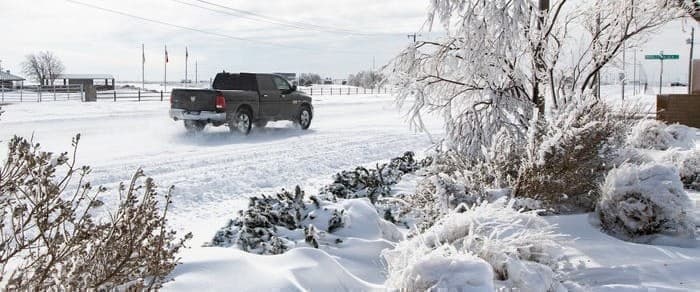Beginning this Thursday (December 22, 2022), another cold front will engulf Texas. Night time low temperatures in Dallas, TX for example are forecast to be 10, 18, and 24 degrees (Fahrenheit) from the 22nd to the 24th. A potentially record breaking cold snap lasting right up until Christmas Eve. Perfect timing. But the key question for us is whether the energy industry in Texas, both gas and electricity producers, has adequately addressed the weatherization and other equipment flaws in their system exposed by Storm Uri in February 2021. This storm which impaired both electric and gas production caused several hundred deaths with estimates of economic damage exceeding $100 billion making this the costliest storm in Texas history. Let’s briefly review what happened to the electric and gas systems as well as the associated financial impacts. On the electric production side power outages totaling about 46,000 MWs were reported. Of these, 30,000 MWs were offline due to weather-related issues, another 5600 MWs were off due to equipment failure, 6700 MWs were unable to obtain natural gas as a boiler fuel, with the remaining 4000 MWs offline due to grid malfunctions like T&D outages and frequency issues. In an effort to address the weather related causes of these outages, the Texas Public Utility Commission last year directed power generators to remedy flaws exposed by the February storm. (The measures recently adopted by the PUC were first proposed in 2011 right after a similar storm precipitated widespread outages.)
On the natural gas side, this storm nearly disrupted the entire gas business in Texas. For example, from early February to February 18 (right after the storm) gas production in the Permian Basin had declined by 85% and two thirds of gas processing plants had outages. Gas pumps and other equipment at the wellhead froze. The declines in the gas production system began prior to electrical outages. Gas industry failures especially with respect to weatherization appear to have exacerbated electricity shortages. Like the Public Utility Commission, in August the Texas Railroad Commission which regulates the gas industry, required that oil and gas companies properly prepare equipment for extreme weather or face fines of up to $1 million.
Related: Chinese Refiners Are Profiting From The Russian Oil Price Cap
In terms of the February storm’s financial impacts, natural gas prices which are normally well below $10/mm BTU spiked to over $400/mm BTU generating windfall profits for those fortunate few gas providers able to produce and transport natural gas. Electricity prices also spiked to $9,000/MwH under PUCT orders. This also led to windfall profits for a fortunate few generators (including wind farms) but also large financial losses for the following groups: power generators whose equipment failed, generators who remained on line but were unhedged to high gas prices, load serving entities like retail electric providers, munis, and co-ops—all of whom were inadequately hedged. And lastly, market participants defaulted on payments to ERCOT for electrical energy and ancillary services and these losses possibly totaling $7 billion will be recouped via securitization over twenty years thereby shifting the private sector’s loss into higher rates for Texas’s electricity consumers.
The Texas legislature also passed SB 3 to address issues raised by the winter storm. They approved the securitization measures cited above. But they also exempted from winterization requirements those pipelines transporting gas to a processing plant or a pipeline purchaser. The Railroad Commission’s original weatherization proposal also included an opt out feature for operators in the gas supply chain if they simply filled out a form and paid a $150 fee. After much criticism the commission eliminated this opt out feature. The Federal Reserve Bank of Dallas estimated that the cost to weatherize a gas well was between $20,000 to $50,000 which would mean an annual statewide expenditure of $85-200 million. This compares rather favorably with the $100+ billion damage estimate of the storm.
Perhaps most surprising to us is the finger pointing or attempted blame shifting between representatives of the electric and gas industry. Electric power generators, trying to avoid blame for the catastrophic consequences of a multi-day power outage during an arctic temperature blast, accuse their gas suppliers of cutting them off, causing blackouts. The gas industry response is essentially that of course there was no gas delivery, you shut off electricity to our pump motors. It really doesn’t matter who’s at fault especially if regulators are eager to minimize industry distress. But at a different level, the fact that Texas’s electric and gas industries are regulated by two completely separate bodies poses a real question about the state’s ability to coordinate critical weatherization policy between electricity generators and gas producers who are mutually dependent.
At another level this is also about an important aspect of utility service. It has to be reliable and resilient, accomplished with the financial support of regulators. Are we really confident that Texas’s reluctant regulators have aggressively pursued the complicated tasks of weatherization and inter-industry coordination? The best we can say is that this appears to be an untested system facing another severe weather challenge. The bright side? it could put a whole new meaning on receiving a lump of coal in the Christmas stocking.
By Leonard Hyman and William Tilles for Oilprice.com
More Top Reads From Oilprice.com:
- LNG Tanker Orders Soar 95% To Hit A Record High In 2022
- The Era Of Cheap Oil Has Come To An End
- Big Oil Pours Billions In The Permian Basin


















What I heard was that the TX PUC had contractual obligations for all major electrical users to cut off their usage when electricity supplies reached a critical state. A wise plan except that some of those users were operators in the gas supply chain (production, transport, and processing). Not many knew they could opt out, though many tried. Can you say bureaucracy?